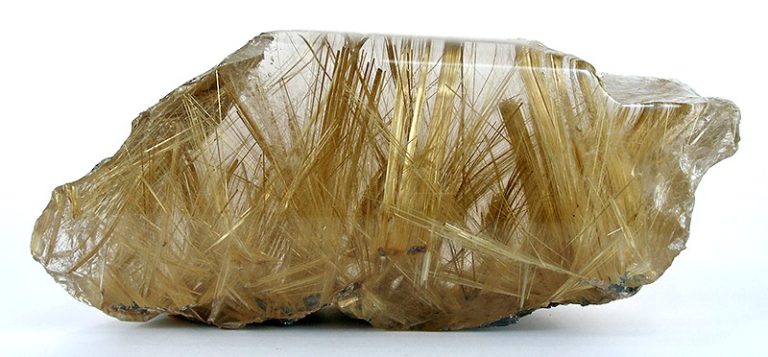
Quartz gemstones abound and include many consumer favorites: from amethyst and citrine to rose and smoky quartz. Though less in demand, rutilated and tourmalinated quartz enjoy a devoted following who appreciate their unique beauty and sophistication.
Strands of time
These gemstones share an intriguing formation. They formed 400 to 500 million years ago when quartz and other minerals came together as liquids. As they cooled and hardened, these stunning combinations formed awaiting discovery. When cut and polished, each gleaming crystal hosts an array of artfully strewn mineral strands.
Needlework
Tourmalinated Quartz is shot through with black tourmaline needles. This stunning gem makes it the perfect accent for every woman who loves black and it pairs equally well with denim and rich and bright hues.

Rutilated Quartz features rutile needles. What is that? Rutile is the most abundant naturally occurring form of titanium dioxide combined with varying amounts of iron oxide. This gives it its golden to coppery hue, while also acting as a coloring agent in certain copper alloys.

Venus Hair
Rutile embedded in clear quartz appears as glorious strands of gold or copper. These strands are called “Venus’ hair,” after the color of the goddess’s hair in Botticelli’s famous Renaissance painting, The Birth of Venus. In some prints, her hair is distinctly coppery which is close to the color in the original painting. In other images, her hair is golden. Rutilated quartz comes in both shades.

Subtle or bold?
Cabochons are the favored cut for rutilated and tourmalinated quartz because they provide the best view of the needles. You’ll find cabochons of both gemstones in the shapes below in our Calibrated Gemstones selection on Stuller.com. Whether your customer wants a subtle 6 mm round or a bold 16 mm x 12 mm oval, they’re easily affordable. And to seal the deal, we offer numerous mounting choices they’ll love.
Which is more powerful— rutilated or tourmalinated quartz?
Mmmm, that’s a tough choice. According to lore, they both have much to recommend them, and because they are both quartz, their powers have some overlap. Let’s see what we can learn.
Tourmalinated Quartz
Black tourmaline has strong protective qualities, acting as a buffer between you and psychological or physical problems. Clear quartz has rich healing and restorative properties. When you put the two together, you have a gemstone that —
- Dissipates or deflects negativity, whether it comes from your negative attitudes (fear, resentment, self-doubt, and jealousy) or someone else’s.
- Helps eliminate stress. (Probably brought on by negativity!)
- Facilitates communication.
- Brings clarity to decision-making.
- Reduces fatigue and balances energy.
- Enhances your ability to calm yourself.
- Aids meditation.
Rutilated Quartz
Rutile’s golden strands strengthen the abilities of its host crystal. In this instance, it enhances quartz’s healing properties for remarkable effects. Rutilated quartz —
- Supports the respiratory and digestive systems.
- Strengthens the immune system.
- Absorbs mercury poisoning from nerves, muscles, blood and the intestinal tract.
- Revitalizes the body and slows the aging process by stimulating cell regeneration and repair.
- Improves understanding in difficult situations so you can act appropriately.
- Relieves feelings of depression and loneliness.
- Provides direction and creativity to the wearer.
- Removes self-doubt and fear.



Leave a comment